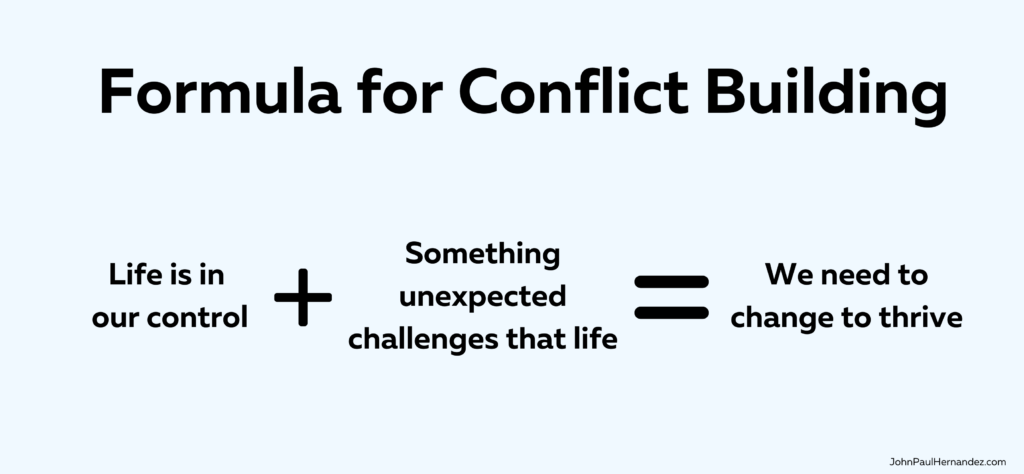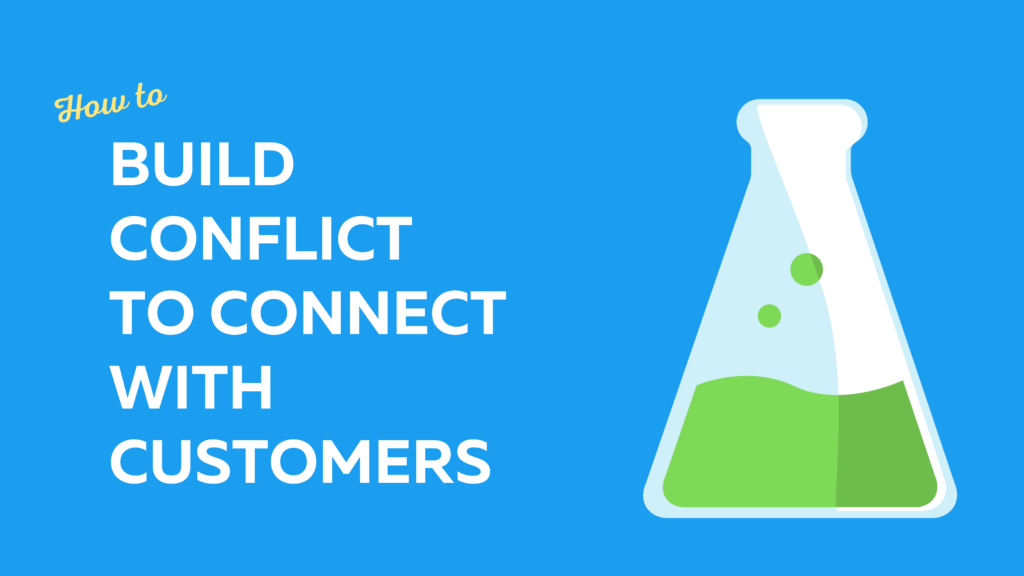Stories are the most powerful way to connect with your audience. It captures their attention and plugs into their emotions. But often, we fail to develop a compelling one. The most common issue is a lack of conflict in the story.
For example, imagine you run a website that sells great supplies for gardening and you want to tell a story in your copy. A general statement might be: “Jane loves gardening, and when she used our super-growth soil, her vegetables grew to be the healthiest she’s ever seen.”
While some of that statement highlights a feature and benefit (powerful soil = healthy and amazing veggies you’re proud of), it doesn’t tell a story, and it missed the potential to connect with a reader.
To add stronger emotion, we need to introduce conflict to build out a story:
“Jane always grew herbs in her backyard, but after seeing a documentary about produce, the thought of pesticides and chemicals and what they could do to her family horrified her.
“She was excited to start an organic farm that would produce healthy veggies.
“She waited months for healthy vegetables she could enjoy with her family. But one day, she noticed the plants withering.
“All that time, wasted, left her frustrated. She almost gave up on her organic farm. Maybe she had to accept the thought of chemicals on her food.
“Then she found us and told us about her problem.
“We learned she needed more powerful nutrients to get what she wanted.
“When she tried the high-growth soil, she waited a shorter amount of time and finally experienced her proud moment serving organic vegetables at the family table, more luscious and delicious than any grocery store produce.”
In this short story, we have two conflicts.
Our first conflict is in the introduction: Jane didn’t want to expose her family to harsh chemicals.
So she sets out on her journey with high hopes when suddenly she’s faced with the primary conflict: her vegetables didn’t make it, and she wanted to give up after waiting months.
This struggle invites the gardening hobbyist into the story, connecting their own experiences with Janes’.
Everything we say or write can include a story.
The main eliminate we need is conflict to make that happen. So how can we identify the right one?
We can adopt this equation to get started on conflict:
Life is in our control + something unexpected challenges that life = we need to change to thrive

While this is not the only way to develop a conflict in a story, it’s a powerful and classic one we can use anytime we need to.
For example, let’s say you run an eCommerce company that sells sunglasses for outdoor fans. We can identify a conflict in the customers’ stories.
Jake loves fishing + the summer months practically blind him, and his sunglasses aren’t strong enough, ruining his peaceful afternoon = Jake needs the right sunglasses to protect his eyes so he can enjoy his love of fishing.
The key to conflict is understanding what the end goal is. When someone faces a challenge, they want to overcome it. They recognize something needs to change.
If you could be the guide that introduces how to change, you can connect with your audience through storytelling and promote action.


